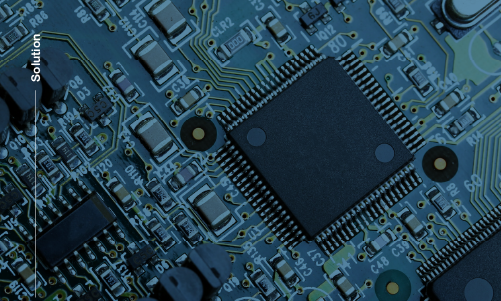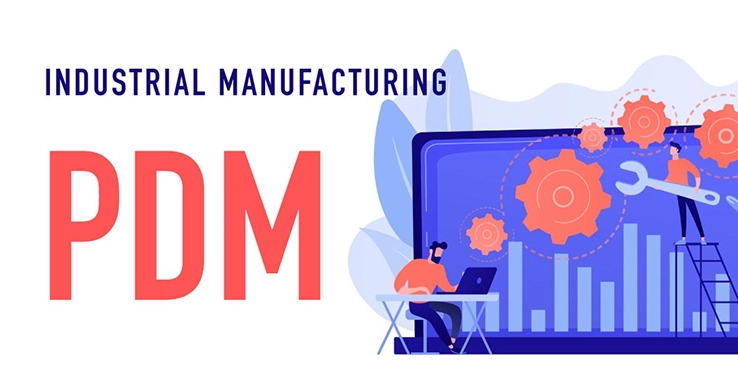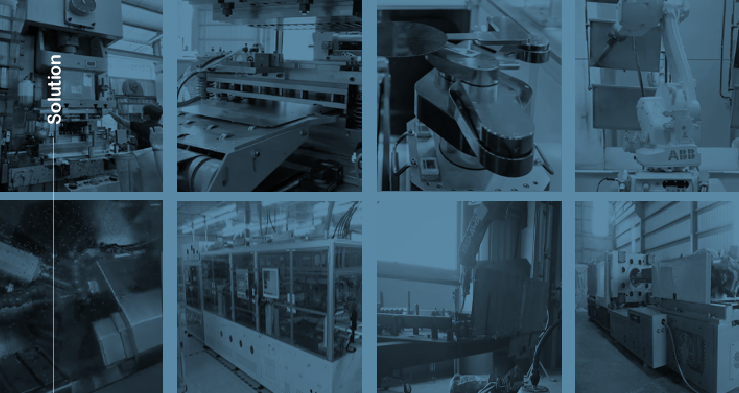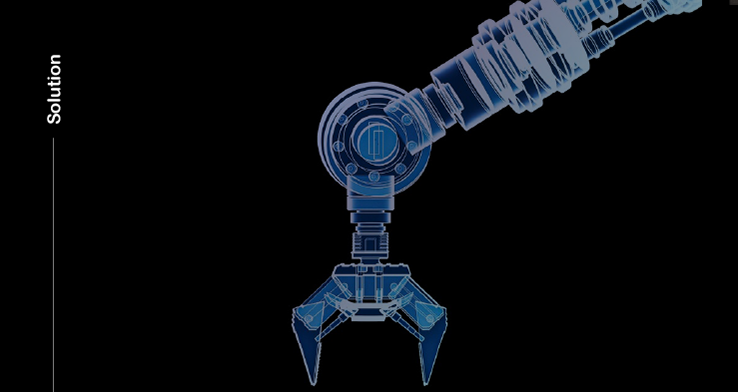Semiconductor CoWoS 2.5D Packaging Monitoring
Solutions|Semiconductor CoWoS 2.5D Packaging MonitoringAs Moore's Law slows down and the demand for HPC, AI, and big data processing continues to grow, 2.5D packaging technology has become an ideal choice for these fields.
Reasons for Implementation
Industry Trends
The semiconductor CoWoS 2.5D packaging technology is experiencing rapid growth, driven by the increasing demand for high-performance computing (HPC), artificial intelligence (AI), and data centers, as well as the rising complexity of chip design. As Moore’s Law slows down, semiconductor manufacturers are looking to overcome traditional limitations through heterogeneous integration.
2.5D packaging allows chips of different process nodes and functionalities (such as processors and memory) to be integrated into a single package. This significantly enhances system design flexibility and performance while reducing power consumption. By integrating large amounts of memory and processors into a single package, this technology has become crucial in many advanced applications.
T-company's CoWoS 2.5D technology has emerged as one of the leading advanced packaging solutions globally and has been widely adopted in high-end applications. Other semiconductor foundries are also developing similar technologies, indicating that the demand for 2.5D packaging will continue to grow in the market.
As 2.5D packaging technology matures, 3D packaging (such as T-company's SoIC technology) is expected to be the next stage of development. 3D packaging further increases chip density, reduces power consumption, and enhances performance, potentially replacing 2.5D packaging as the next-generation advanced solution in the future.

2020-2027 Advanced Packaging Market Scale Forecast *Source: Yole, Zhongyou Securities Research Institute
How to Implement
Reducing Process Anomalies and Ensuring Production Yield
2.5D packaging technology allows the integration of chips from different process nodes within a single package, enabling optimized functionality for each component and providing greater design flexibility for advanced system architectures.
However, as packaging density and microfabrication technology advance, maintaining equipment stability and precision becomes critical. It is essential to minimize process defects and failures, which could impact production quality. By monitoring equipment status in real-time, manufacturers can detect anomalies early, optimize recovery processes, and maintain high operational efficiency with minimal disruption to production schedules.
Wafer Dicing Process Management
Challenges
Precision at the Micron Level Determines Process Success
From raw material to the final wafer-level package, a wafer undergoes hundreds of complex steps, including material processing, photolithography, etching, doping, cleaning, and metallization. With CoWoS stacking technology, its highly integrated multilayer structure and dense interconnects significantly increase the value of each wafer. Thus, precision requirements are becoming increasingly stringent, and even the slightest deviation can determine the success or failure of the process.

Impact of Blade Misalignment?
The accuracy of the dicing blade is one of the critical factors ensuring precise cutting in semiconductor manufacturing. If the blade angle is slightly misaligned or damaged, it can lead to uneven wafer die edges, inconsistent kerf width, and an increased risk of microcracks, die chipping, die fracture, or misalignment.

Additionally, if the cutting angle is not uniform, subsequent dicing processes may experience excessive blade wear, breakage, and frequent blade replacements, ultimately leading to chip damage and production yield loss.
Solution
Digitized Monitoring for Blade Replacement Quality Control!
Difficult to control blade installation quality after each replacement?
To ensure blade stability during dicing, any installation errors can lead to cutting inaccuracies.
By utilizing the VMS-CK system, blade replacement operations can be standardized through digitized monitoring.
During blade replacement, up to four angle adjustments can be made to achieve optimal dynamic balance.
This standardizes blade installation, ensuring the best vibration quality for precision cutting in every operation.
VMS-CK Blade Quality Monitoring System
Long-term use can cause component wear, structural resonance, and anomalies in the drive motor, all of which may lead to abnormal vibrations.
Therefore, it is crucial to monitor and assess the spindle and movement axis quality to prevent excessive vibrations from transferring to the blade.
By utilizing the VMS-CK Blade Quality Monitoring System, manufacturers can track blade quality trends in real-time.
The system employs threshold management to detect and intercept variations early, effectively preventing defective products caused by blade misalignment.
Die Placement Process Monitoring
Execution Challenges
A Chain Reaction: How Minor Issues Can Disrupt the Entire Process
In the die bonding process, the die placement machine is responsible for separating individual dies from the wafer and placing them onto the packaging substrate. Therefore, precise positioning control with micron-level accuracy and stability is required. The movement axes of the placement machine operate continuously under high-intensity conditions. If the motor runs unstably or malfunctions, it can lead to inaccurate die placement, compromising the entire batch's product quality, causing defects, and resulting in production line downtime.
Die Defects Caused by Abnormal Nozzle Pressure
During the Pick & Place process of the die placement machine, the nozzle relies on vacuum pressure to generate suction and transfer the wafer or die from one location to another. The vacuum pressure level directly affects the nozzle's suction ability. When the nozzle contacts the wafer surface, it needs to apply an appropriate contact force to ensure secure gripping. If the pressure is too low, the suction will be weak, leading to poor adhesion. Conversely, excessive pressure can damage the die, causing defects and material loss.
Pneumatic Cylinder Quality Affects Alignment Accuracy
In the die placement process, the pneumatic cylinder ensures uniform solder distribution, forming a strong and reliable bond at the solder joints. Several factors can cause pneumatic cylinder failures, including oil or gas contamination, valve wear leading to clogging, misaligned shafts causing improper actuation, or foreign particles causing cylinder jamming. If the pneumatic cylinder operates unstably, it can result in misaligned dies, leading to faulty electrical connections and eventual product failure.

Implementation Strategy
Detect Early Abnormalities via Motion Axis Current Signal Monitoring!
How to Ensure the Quality of the Die Placement Machine’s Motion Axis? The motion axes of the placement machine drive the bond head, and stable motor operation ensures smooth movement. If the motor suffers from insufficient lubrication, obstruction, or wear, it will increase mechanical resistance, requiring the motor to draw higher current to maintain its power output. This leads to significant current spikes and abnormal vibrations during operation. Therefore, we utilize an IoT-based quality monitoring system for the die placement machine to track current fluctuations in the motion axis, enabling early detection of anomalies and ensuring the stable operation of the placement machine.
DB-IoT Die Bonder Quality Monitoring System
To ensure consistent suction and transfer operations while maintaining high production efficiency, any abnormal motion in the die bonder must be identified immediately.
To reduce operational errors and failure rates while improving production efficiency, etailed data analysis is essential.
Through the DB-IoT quality monitoring system, comprehensive historical records can be analyzed.
By examining operational data and motion frequency, the system helps rapidly identify the root cause of failures,
shorten troubleshooting time, and support operators in making informed decisions.
Die and Wafer Reflow Soldering Solidification Process Monitoring
Challenges in Execution
Process Interruptions Can Lead to Failure!
Abnormal vibrations during reflow soldering?
In the Reflow stage, stable equipment operation is critical for process reliability and product quality.
If the equipment experiences unstable operation or abnormal vibrations, the molten solder may shift, leading to solder bridging or die misalignment.
Any abnormalities during the process can cause soldering interruptions, resulting in batch failures or the need to restart the entire reflow process.
Therefore, ensuring a smooth and stable process is essential.

Implementation Strategy
Prevent Die Shift and Improve Yield Rate!
How to prevent material displacement during bonding?
In the Reflow stage, heating melts the solder, which then re-solidifies to create a secure bond between the die and the substrate.
When pneumatic cylinders or electric actuators drive the heating plate’s up-and-down motion during reflow soldering,
unstable movements may cause material displacement in the soldering area.
By using the VMS-M14 Monitoring System, it is possible to detect and track dynamic vibration characteristics
during the specific movement of the pneumatic or electric cylinder driving the heating plate’s motion.
This helps prevent material displacement during bonding, which can occur due to mechanical aging or equipment malfunctions.
VMS-M14 Dynamic Monitoring System
To determine when to intercept signals, a sensor is installed on the cylinder-driven spindle to measure vibrations during upward and downward motion.
The collected vibration characteristics are digitized and stored in a big data database, allowing users to define threshold values for real-time monitoring
of the cylinder's operational quality.
The main display uses a traffic light system for real-time status visualization.
If the vibration values exceed the threshold, the system can immediately cut off the signal,
preventing further wafer processing that could result in misalignment or material breakage.
Post-Curing Dicing Process Management
Challenges in Execution
Die Cracks and Chipping Due to Dicing Process Anomalies?
During the dicing process, if the incoming die has already experienced misalignment or skew cutting in the preceding steps, the blade may come into contact with the die before reaching the intended cutting depth, leading to die cracks or chipping, resulting in quality defects. To prevent such issues, the VMS-CK System monitors vibration characteristics during the dicing cycle, allowing early detection of potential variations. This proactive monitoring helps prevent continuous product damage and enables optimized process control based on real-time usage conditions.

Implementation
Real-Time Digital Analysis for Product Protection!
If the incoming wafer has already experienced misalignment or skew cutting, the dicing blade may come into contact with the die too early, resulting in die cracks, chipping, and other quality defects.
VMS-CK Dicing Blade Quality Monitoring System
To prevent such issues, the VMS-CK system monitors vibration characteristics during the dicing cycle, allowing early detection of potential variations. This proactive approach helps prevent continuous product damage and ensures real-time process optimization based on actual usage conditions.
VMS-CK Dicing Blade Quality Monitoring SystemImplementation Benefits
Enhanced Performance, Shorter Lead Time!
Improve Product Yield:
Ensure precise quality control of equipment to minimize cutting deviations and die defects during the dicing and die bonding processes.
Extend Equipment Lifespan:
Implement predictive maintenance to reduce replacement frequency and costs, thereby prolonging equipment lifespan.
Increase Production Efficiency:
Ensure consistent wafer cutting quality to reduce rework and scrap caused by quality issues.
Reduce Downtime:
Regularly maintain equipment and blades to minimize downtime caused by machine failures or blade damage.
Enhance Competitiveness:
Implement strict quality monitoring and management to ensure batch-to-batch consistency and high-quality production, improving customer satisfaction.
Shorten Delivery Cycle:
Optimized production processes and reduced rework rates shorten production cycles, enabling faster market response.
Support
Other Semiconductor-Related Applications














